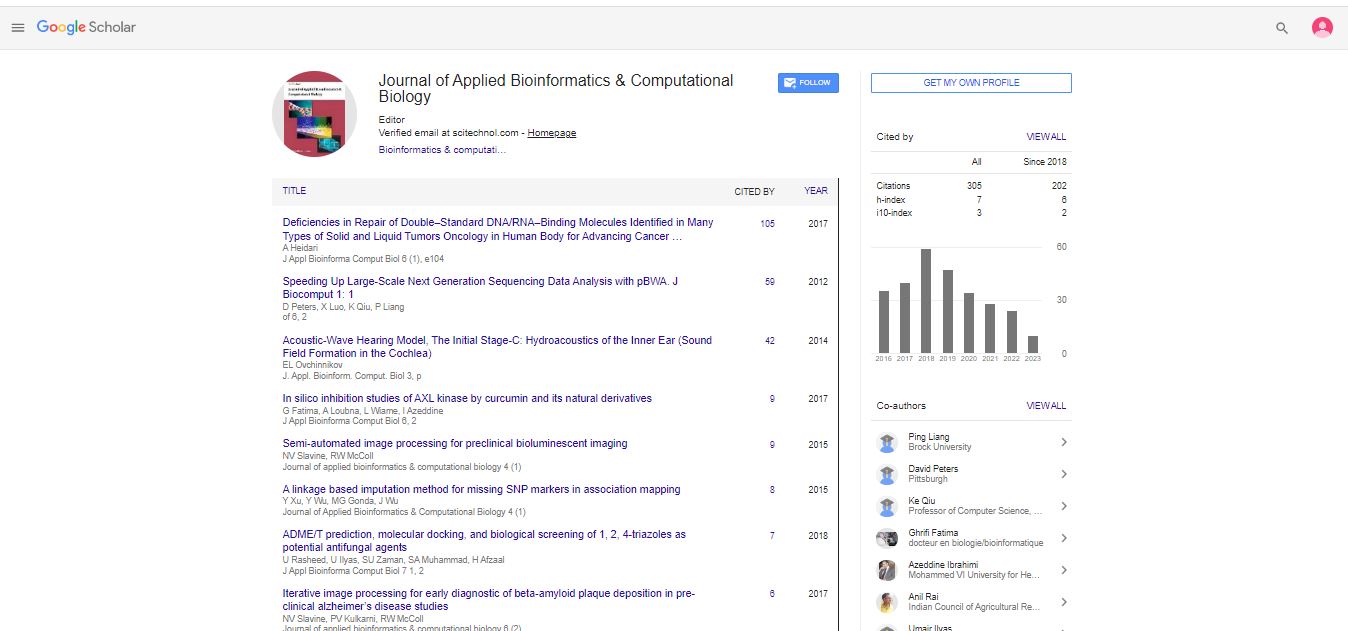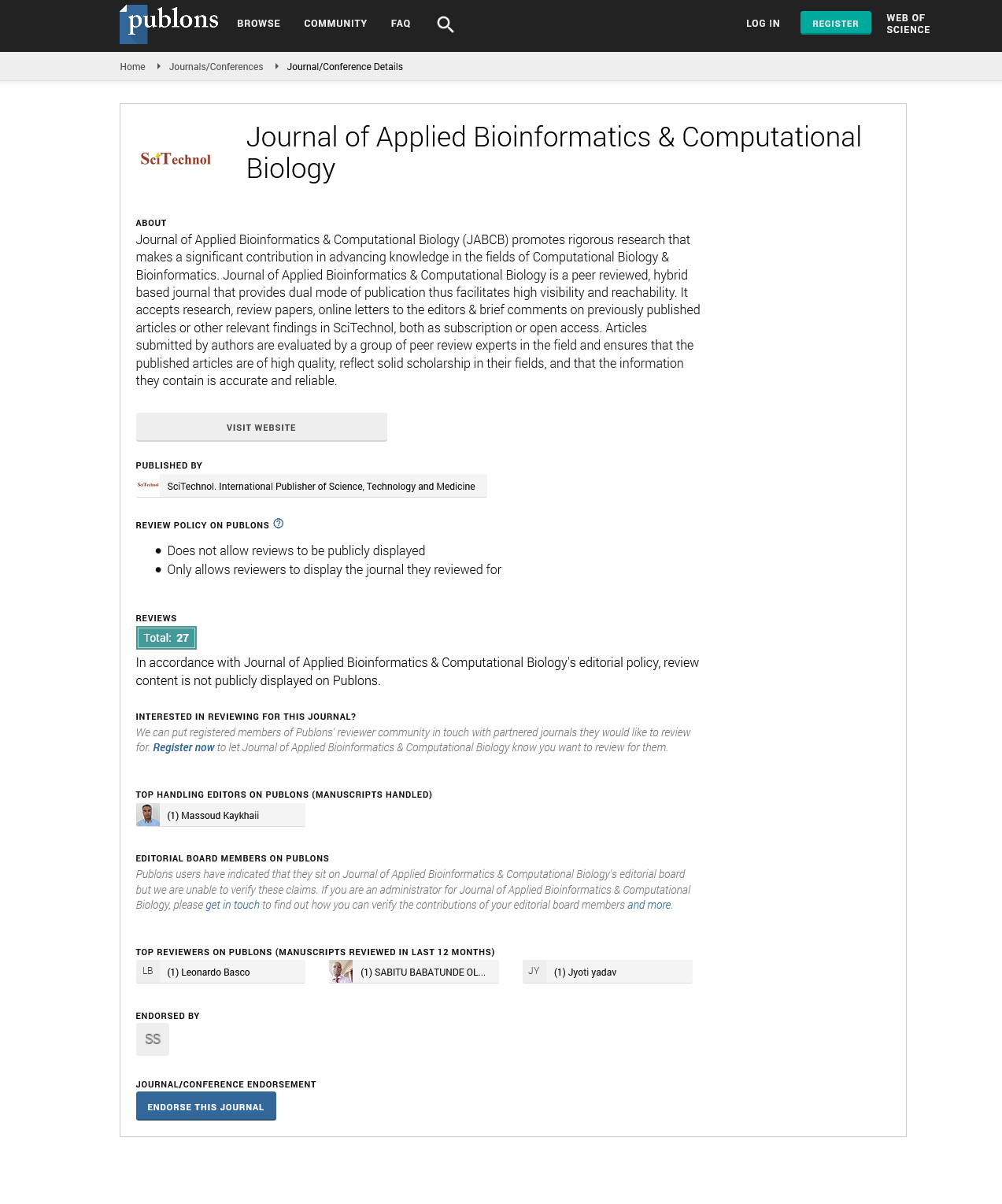Screening, identification and antimicrobial activity of mycoparasitic fungus (Aspergillus sp.) from Philippine Aglibut sweet tamarind
Crisanto A Miclat Jr., Rosalie R Rafael, Jonar Yago and Jacqueline V Bagunu
Pampanga State Agricultural University, Pampanga
Central Luzon State University, Nueva Ecija
Nueva Viscaya State University, Nueva Viscaya
: J Appl Bioinforma Comput Biol
Abstract
Due to the increasing resistance of pathogenic microorganisms, Aspergillus sp. isolated from Aglibut sweet tamarind's bark of Pampanga State Agricultural University was evaluated for potential mycoparasitism and antimicrobial activity. The micrograph obtained from Scanning Electron Microscopy (SEM) Analysis reveals that Aspergillus sp. is a potential mycoparasite; further, its identity was 99% which was confirmed through 18s rDNA of its ITS1 forward and ITS4 reverse sequences by Polymerase Chain Reaction (PCR) Amplification and Sequencing. Moreover, Thin-layer Chromatography (TLC) was used to identify the bioactive compounds of Aspergillus sp. The chemical groups such as a Glycosidic flavonoid, Alkaloid, and Anthrones were also present which can express the desired activity. Complete Randomized Design (CRD) was carried out with the following treatments; T1 (suspensions), - control (DMSO) and + control (streptomycin for bacteria: ketoconazole for fungus). Paper-disc Diffusion confirms that the suspensions of Aspergillus sp. have significant antimicrobial potential as shown in the zones of inhibition in S. aureus and S. cerevisiae but with lower activity in E. coli. Thus, Aspergillus sp. is a potential mycoparasite and source of new drugs and drug products.
Biography
E-mail: miclatcrisantoaquinojr@yahoo.com
 Spanish
Spanish  Chinese
Chinese  Russian
Russian  German
German  French
French  Japanese
Japanese  Portuguese
Portuguese  Hindi
Hindi 
